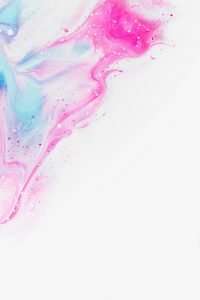Art prints are like any other type of art. They require proper care and handling in order to maintain their value, as well as to preserve their longevity. In fact, the print medium is particularly sensitive to light, moisture, and temperature fluctuations. Considering the cost of high quality art prints and the size of most pieces, it makes sense to take care of them in such a way that your art investment will last for years, not just days or weeks.
Typical display areas for artwork are the bedroom and living room. This can be challenging because central heating and cooling systems dry out a room quickly. The ideal temperature range for an area where you might display artwork is 65-70 degrees Fahrenheit. Experts also recommend keeping artwork away from direct sunlight in a room with central air conditioning because air conditioning will dry out walls and artwork placed against them. Direct sunlight causes fading in color images, while heat can cause warping of the paper or canvas on which the image is printed.
To keep your art looking great, here are 10 tips to follow:
1. Use acid-free matting and framing materials when framing your prints; this ensures that they won’t yellow over time due to contact with acidic materials
2. If you live in a humid climate, remove artwork from
Anyone who has ever purchased art prints knows the overwhelming feeling of excitement when you unpack your new prints, hang them up and admire them. You might even take a few pictures to commemorate this proud moment. The natural consequence is that they will be displayed in your living room, where they can be admired by every guest that comes over.
But how long do you think these newly purchased art prints will last, before they become torn, faded or damaged? If you were to leave them hanging on the wall for more than a year, it would be a miracle!
Ever since I began painting watercolor reproductions of famous paintings, I’ve learned so much about printing techniques and how to create an archival-quality print. I’ve seen so many prints get damaged because their owners didn’t treat them correctly.
Many people think that any old frame will do the trick. This simply isn’t true; you need to consider several factors before choosing a frame for your watercolor reproductions. You want to ensure that the print is protected from dust and direct sunlight…
Here are 10 helpful tips for keeping your prints looking just as good as the day you bought them:
1. Frames – Consider using UV-protective Plexiglas or glass in frames if you
The first thing you want to do is make sure that you’re buying archival art prints rather than just normal prints. There are a lot of people out there who think that if they buy a print at a local store, it will last for years and years. They are very wrong.
What makes an art print archival? It has to have certain physical characteristics in order to be able to hold up for 70 or 80 years. The paper needs to be of archival quality and acid-free. The inks need to be UV resistant (for sun light) and waterproof (for rain, snow and water damage). The printing process also needs to be done with proper care and quality control to ensure that the colors won’t run or fade over time.
1. Always use an acid free mat and backing board.
2. Don’t expose your print to direct sunlight or heat sources.
3. Prints are made on paper, which is not water-proof; so don’t place them in a damp environment such as a bathroom.
4. Avoid touching the surface of your print when handling it; this will cause fingerprints and smudges which will be hard to remove later on.
5. Keep prints away from any objects that have strong odors such as perfumes, insecticides, etc.; this might cause damage to the print’s surface and/or color fading.
6. Don’t hang your print using nails, as this can cause damage to the back of the print and/or may rip out some of the image area.
7. To clean your print, use a soft cloth slightly moistened with distilled water or mild soap, and wipe gently in one direction only (never rub). Be careful not to leave any water stains on the surface after cleaning it, as they might become permanent over time if left untreated. NEVER use window or household cleaners on your print!
8. If you wish to frame your print, make sure that the glazing doesn’t touch the front of the print
There are several reasons why your prints may begin to fade, crack or peel:
1). The print is too close to light sources.
2). The print is exposed to too much moisture.
3). There is a build-up of dust on the print.
4). The prints have been left out in the sun.
5). There is a chemical reaction occurring in the print.
6). The print is scratched, scraped or bumped.
7). The print has been exposed to extreme temperatures.
8). You have used an inferior quality paper stock for printing.
9). There are small pinholes or scratches on the photo paper.
10). The surface of the picture has become dirty and oily
A professional-grade inkjet printer (best for printing photographs) and a high-quality photo printer (best for printing text, graphics, and illustrations) are excellent tools to have on hand. Many printers have the ability to print directly onto mounted canvas, which is ideal for creating large prints.
One of the most important factors in determining how long your prints will last is the type of paper you use. The best way to preserve your prints is to use archival paper. This type of paper has a neutral pH level and contains no acid, lignin, dyes or pigments that can cause fading over time. Archival paper is available in both matte and glossy finishes in white and cream colors.
Mylar or polyester sleeves protect your images from scratches, dust and dirt. They also help eliminate fingerprints. You can find sleeves designed specifically for standard sizes such as 4″ x 6″, 5″ x 7″ or 8″ x 10″. Although Mylar sleeves are considered archival, they do not protect against acid and other harmful materials, so it’s best to place prints between two pieces of acid free backing board when storing them in a sleeve.
Whether you are a professional photographer or an amateur one, having your own art print station can be a great way to increase your sales.
And that’s why we’ve put together this list of tips to help you get started.



